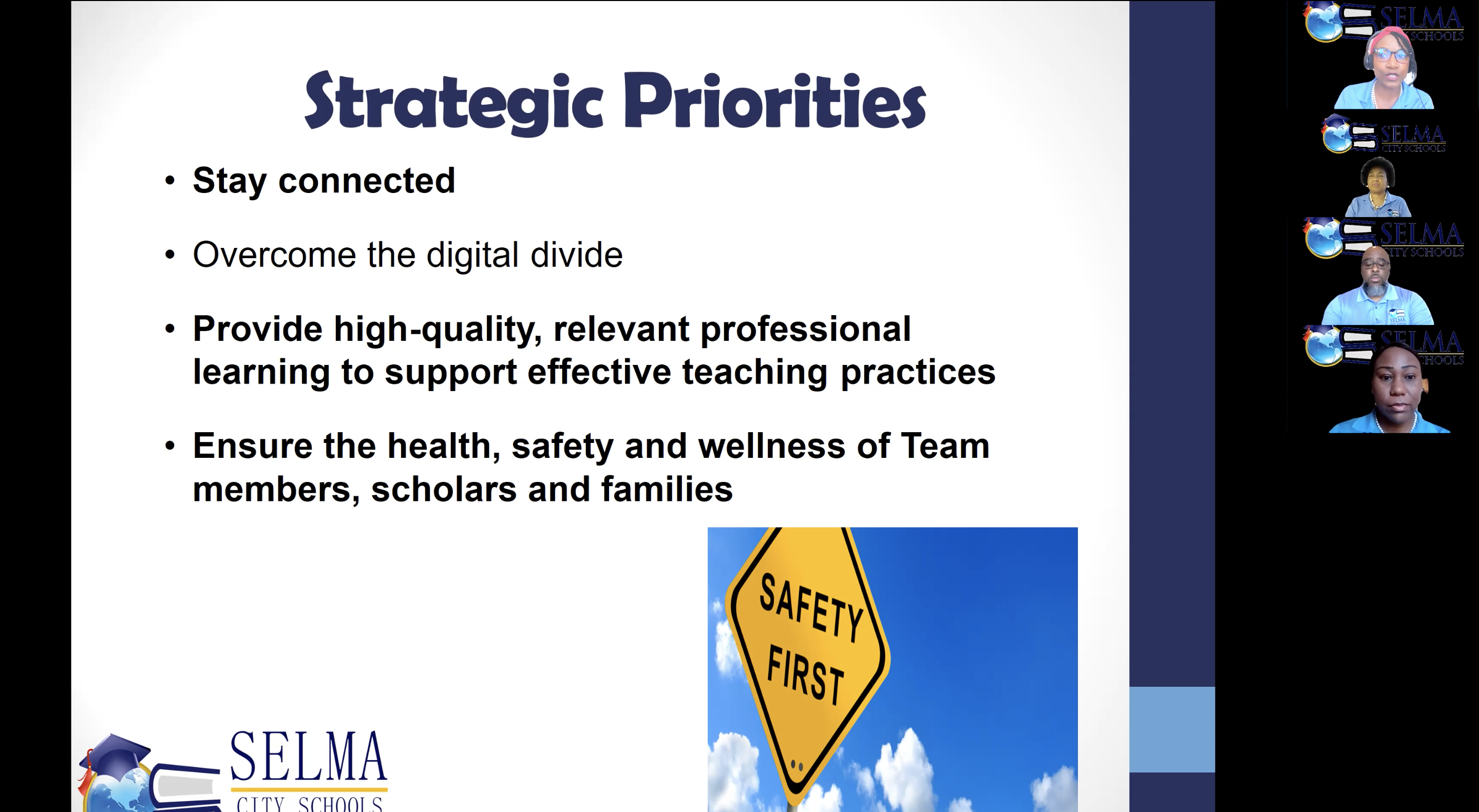By Adriana Rozas Rivera |
Selma City Schools in Selma, Ala., faced ample hardships even before the COVID-19 pandemic struck, but a shift in vision from district and school leadership has allowed students and educators to succeed amidst the national health crisis.
At the AASA national conference panel “Aim for Excellence: Prioritizing Trauma and Self-Care with Team SELma” on Friday, Feb. 19, a team of Selma City Schools administrators shared the district’s story. They discussed the district’s challenges before the pandemic, their modified approach to teaching and learning and the importance of emotional well-being to achieve a nurturing educational environment.
Panelist Rafael Simmons, Selma’s director of federal programs and strategic planning, described the district’s connections with families and teachers, the greater attention given to student health and safety and the use of best teaching practices. Bridging the digital divide was particularly difficult for the school district, which enrolls 2,800 students in pre-kindergarten through 12th grade.
“We were nowhere near one to one with devices for our scholars and we live in a community where connectivity is an issue,” Simmons said.
Superintendent Avis Williams emphasized the efforts to connect with the community. The district used social media, its website, robocalls and surveys to contact families and students to provide needed support.
“Even though we couldn't physically see them and hug them and love them, we were making sure that they knew that we were still there for them and that we were caring for them through this pandemic,” Williams added.
 The school district provided resources for families to manage emotional distress during virtual learning. Teachers also began sending “Morning Joy,” a daily newsletter from the superintendent to promote self-care and “provide a daily dose of joy.” The district also hosted “Virtual Chat & Chews” a couple of times a month allowing district educators to reach 70 percent of families with school-age children.
The school district provided resources for families to manage emotional distress during virtual learning. Teachers also began sending “Morning Joy,” a daily newsletter from the superintendent to promote self-care and “provide a daily dose of joy.” The district also hosted “Virtual Chat & Chews” a couple of times a month allowing district educators to reach 70 percent of families with school-age children.
The panel also covered how trauma can affect education. Alisa Smiley, behavioral interventionist in Selma, said trauma can affect attentiveness, cause difficulty organizing narrative material and understanding another person’s perspective, among other symptoms. It also can cause students to struggle with managing their emotions.
Students misbehaving can be attributed to trauma, Smiley added.
“Our scholars sometimes live in trauma or situational trauma even aside from the pandemic,” Williams said.
Despite facing multiple obstacles before and during the pandemic, Selma City Schools’ efforts yielded results. Their 2019 Alabama State District Report Card increased from a 68 to a 76 grade, and 90 percent of team members said they believe the district is moving in the right direction. The school district won the Alabama Performance Excellence Tier II Award, and the graduation rate improved from 82 percent to 89 percent between 2017 and 2019.
“I attribute all of this to the shifts that we've made in our district culture,” Williams said. “We are attempting to make sure that we're aiming for excellence and transforming to a culture of joy. And although it's looked different over this last year, we have held true to those core values and made sure that we infuse those core values in our work even during these unprecedented times and even though we did not always know what the outcomes were going to be.”
(Adriana Rozas Rivera is a graduate student at Syracuse University’s S.I. Newhouse School of Public Communications and an intern with AASA’s Conference Daily Online.)

